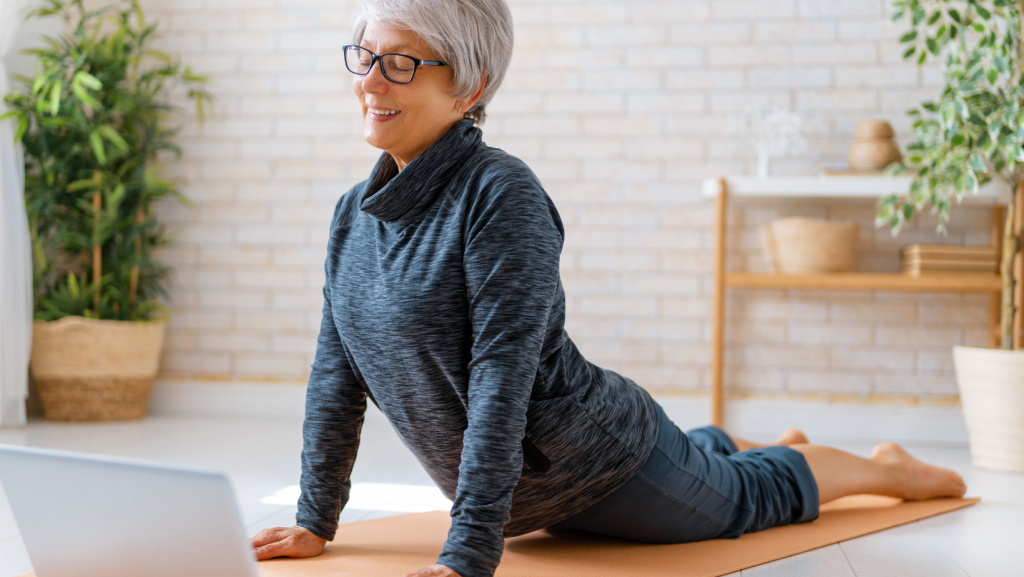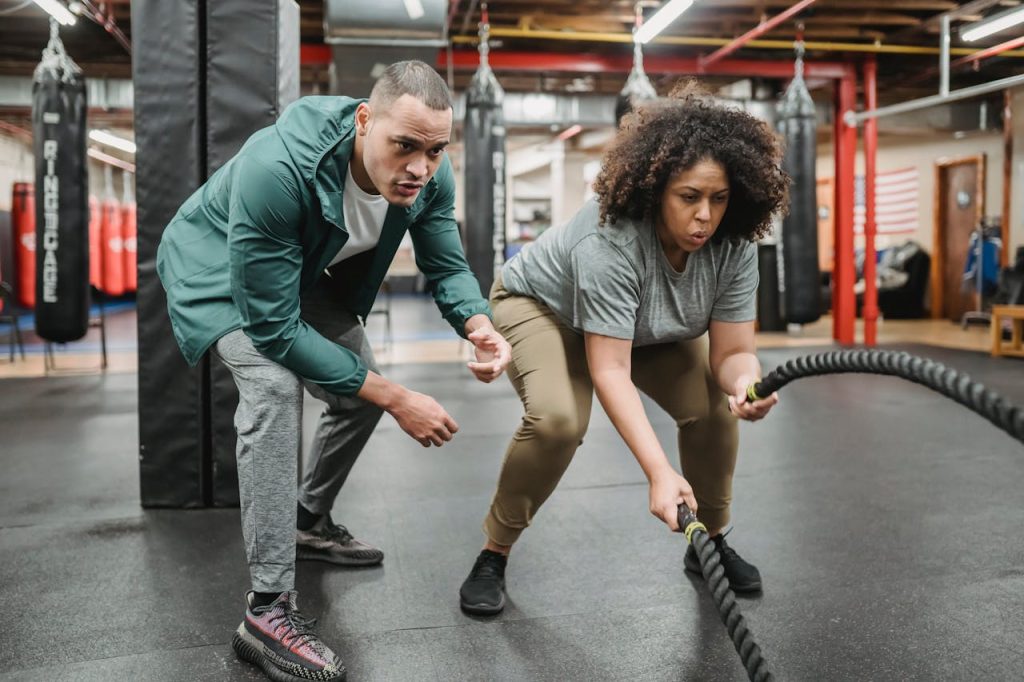Did you know that only 1 in 4 adults aged 65-74 are physically active for healthy aging? Staying fit during retirement is not just about looking good; it’s about ensuring a high quality of life and healthy aging. By prioritizing retirement fitness, you can enjoy increased energy levels, improved mental health, and reduced risk of chronic diseases. Embracing an active lifestyle now sets the stage for a vibrant and fulfilling future. Discover how wellness, staying physically and mentally fit, can make all the difference as you step into your golden years.

1. Holistic Approach To Senior Health
A. Nutritional Needs
Prioritize a balanced diet rich in nutrients to support energy levels and overall health. Consider dietary adjustments such as hydration and protein intake. Educate yourself on superfoods enhancing recovery and boosting immunity.
B. Mental Health Care
Seek professional help for prolonged depression or anxiety. Utilize relaxation techniques like meditation or deep breathing. Create a supportive environment by engaging in uplifting activities.
C. Social Engagement
Join community groups to combat loneliness and foster connections. Schedule regular meet-ups with friends or family to maintain strong social ties. Participate in group exercises for fitness and social interaction.
D. Preventive Health Check-ups
Schedule annual check-ups to monitor health metrics and catch potential issues early. Discuss changes in health routines with your healthcare provider for tailored advice. Stay informed about vaccinations and screenings relevant to your age group, aging, and senior living.
2. Connection Between Fitness And Longevity
One of the most compelling reasons to prioritize fitness in retirement is its impact on longevity. Numerous studies have demonstrated a clear link between regular physical activity and longer lifespans. A study published in The Lancet found that even a modest amount of daily exercise, such as walking for 15 minutes, could extend your life by up to three years. The key lies in maintaining consistent physical activity that keeps your body strong, flexible, and resilient as you age.
Fitness doesn’t just add years to your life; it adds life to your years. Staying active reduces the risk of chronic diseases like heart disease, diabetes, and cancer. According to the Centers for Disease Control and Prevention (CDC), physical activity reduces the risk of cardiovascular diseases, one of the leading causes of death in older adults, by 35%.
While the goal may not be to train for a marathon, staying active through low-impact activities such as walking, swimming, and cycling can significantly improve longevity and the quality of your golden years.
3. Practical Fitness Strategies
A. Balanced Lifestyle Tips
Establishing a daily routine that blends physical activity, nutritious eating, and relaxation is crucial for overall well-being. By incorporating these elements into your daily life, you can boost your energy levels and maintain a healthy weight effortlessly. Setting realistic goals for fitness and wellness helps you stay motivated and on track with your progress. Regularly balancing work, leisure activities, and exercise ensures a fulfilling and sustainable lifestyle.
B. Incorporate Social Activities
Integrating social activities into your fitness routine adds a fun and engaging element to your workouts. Planning regular outings like hiking or dancing not only promotes physical activity but also strengthens social connections. Encouraging friends and family to join you in fitness pursuits enhances enjoyment and creates a sense of accountability. Exploring local community events that combine fitness with social engagement can further enrich your retirement experience.
C. Regular Health Check-ups
Maintaining regular health check-ups is essential for monitoring your overall well-being as you age. Keeping track of important health appointments on a calendar ensures timely visits to healthcare providers. Monitoring any changes in your health and discussing them with your doctor during check-ups enables early detection of potential issues. Leveraging these check-ups as an opportunity to reassess your fitness goals allows you to adjust your plans according to any health changes.
4. Managing And Preventing Chronic Conditions
As we age, managing chronic health conditions becomes a reality for many people. Fitness plays an integral role in both preventing and managing a wide range of health issues, including:
A. Diabetes
Physical activity helps control blood sugar levels by increasing insulin sensitivity. Aerobic exercises like walking, swimming, and cycling are especially beneficial for managing Type 2 diabetes. Additionally, strength training can help regulate glucose metabolism by improving muscle mass.
B. Arthritis
Joint pain and stiffness are common in older adults, especially those with arthritis. Exercise helps lubricate joints, reduce inflammation, and improve flexibility. Low-impact exercises like swimming, cycling, and stretching are particularly good for those suffering from arthritis.
C. Hypertension
High blood pressure is another common issue among older adults. Regular exercise can reduce blood pressure by improving heart health and promoting circulation. Cardio exercises, such as walking or swimming, are especially effective at keeping blood pressure in check.
D. Osteoporosis
Bone density decreases as we age, increasing the risk of fractures. Weight-bearing exercises like walking, dancing, and resistance training help maintain bone density and reduce the risk of osteoporosis.
E. Heart Disease
Cardiovascular disease is one of the leading causes of death in older adults. Regular aerobic exercise can improve heart health, lower cholesterol, and reduce blood pressure. Engaging in regular physical activity strengthens the heart muscle and improves circulation.
By managing these chronic conditions through regular exercise, you can reduce reliance on medications, maintain a higher quality of life, and minimize the risk of complications.
5. Social Connections And Emotional Well-Being
Retirement can sometimes lead to social isolation, especially for those who are no longer connected to a workplace or social community. Fitness activities offer an excellent opportunity to build new social connections and strengthen existing relationships. Participating in group fitness classes, walking clubs, or even recreational sports like tennis or pickleball can foster friendships and a sense of belonging.
Maintaining social connections is vital for emotional well-being. According to research published in The American Journal of Geriatric Psychiatry, social isolation is linked to a higher risk of depression, cognitive decline, and premature mortality. Group fitness activities not only provide physical benefits but also combat loneliness by promoting social engagement.
One of the challenges many retirees face is staying motivated to stick with an exercise routine. Joining a group or finding a workout partner can provide the accountability needed to stay consistent. Many older adults find that exercising with a friend or group enhances the enjoyment of physical activity and encourages them to stick with it over the long term.
6. Enhance Independence And Mobility
One of the greatest fears many people face as they age is losing their independence. Fitness in retirement is crucial in maintaining mobility and functional independence. Exercises that promote flexibility, balance, and strength training can help you navigate daily activities like getting out of bed, climbing stairs, or carrying groceries more easily.
A. Strength Training
Muscle mass naturally declines with age, a condition known as sarcopenia. This can result in weakness and an increased risk of falls, which are a significant concern for older adults. Strength training helps combat sarcopenia by preserving muscle mass and building functional strength. Lifting light weights, using resistance bands, or even bodyweight exercises like squats and lunges are excellent ways to build and maintain muscle.
B. Balance And Flexibility
Incorporating exercises that focus on balance and flexibility into your routine helps prevent falls and maintain agility. Tai Chi, yoga, and Pilates are gentle yet highly effective for improving balance and flexibility. These practices also improve coordination and body awareness, which are essential for staying independent and mobile in daily life.
C. Cardiovascular Health
Keeping your heart healthy is essential as you age. Aerobic activities like walking, swimming, or dancing strengthen the cardiovascular system, reducing the risk of heart disease and improving stamina. Even moderate-intensity activities such as gardening or brisk walking can have a positive impact on your heart health.
D. Mental Health and Cognitive Function
Fitness in retirement is not only about physical health but also plays a crucial role in mental and cognitive well-being. Research has shown that regular physical activity can reduce the risk of cognitive decline, including dementia and Alzheimer’s disease. A study published in the Journal of Alzheimer’s Disease found that aerobic exercise increased brain volume in areas related to memory and cognition.
E. Stress Reduction and Mood improvement
Exercise releases endorphins, which are natural mood elevators. Engaging in physical activity can reduce stress, anxiety, and symptoms of depression. Retirement can sometimes bring about feelings of loneliness or a lack of purpose, and regular exercise provides a structured way to combat these feelings. Group activities like walking clubs, yoga classes, or group sports foster social interaction, which is another important factor in maintaining mental health during retirement.
F. Improved Sleep Quality
Sleep issues are common in older adults. Regular exercise, especially aerobic activities, has been shown to improve sleep quality. Better sleep, in turn, contributes to improved mood, energy levels, and overall well-being. Incorporating exercise into your daily routine can lead to more restful and rejuvenating sleep.
7. Overcoming Barriers To Fitness In Retirement
While the benefits of fitness in retirement are clear, there are often barriers that prevent older adults from staying active. Common barriers include health issues, lack of motivation, and concerns about safety. Here’s how to overcome these obstacles:
A. Health Issues
If you have chronic conditions or physical limitations, it’s important to consult with a healthcare provider before starting an exercise program. A tailored fitness plan that takes into account your health needs can help you stay active safely.
B. Lack of Motivation
Staying motivated can be challenging, especially if you’re working out alone. Joining a fitness class, finding a workout buddy, or setting achievable goals can help keep you on track.
C. Safety Concerns
Older adults may worry about injuring themselves during exercise. Choosing low-impact activities, working with a personal trainer, or participating in classes designed for seniors can reduce the risk of injury.
Final Remarks
Incorporating fitness into your retirement routine is not just about staying active; it’s a holistic approach to ensuring a fulfilling and vibrant life in your golden years. By prioritizing your physical, mental, and emotional well-being through practical fitness strategies, you are setting yourself up for a future where you can truly thrive. Remember, taking care of your health now will pave the way for a more active and enjoyable retirement later on.
Start today by implementing small changes that align with your lifestyle and preferences. Whether it’s a daily walk, yoga session, or strength training at home, every step you take towards improving your fitness will contribute to a healthier and happier retirement. Your future self will thank you for the investment you make in your well-being today.

Frequently Asked Questions
1. What Is The Significance Of Fitness In Retirement?
Regular exercise in retirement improves overall health, boosts mood, and enhances mobility. It reduces the risk of chronic diseases, increases longevity, and promotes independence in daily activities.
2. How Does A Holistic Approach Benefit Senior Health?
A holistic approach to senior health considers physical, mental, and emotional well-being. It focuses on nutrition, social connections, mental stimulation, and physical activity to improve quality of life and overall wellness.
3. What Are Some Practical Fitness Strategies For Seniors?
Seniors can engage in low-impact activities like walking, swimming, or yoga. Strength training with light weights helps maintain muscle mass. Balance exercises reduce the risk of falls. Consistency and gradual progression are key to sustainable fitness routines.
4. Why Is Retirement Fitness Crucial For Thriving In The Golden Years?
Retirement fitness ensures seniors stay active, maintain independence, and enjoy a high quality of life. It enhances energy levels, cognitive function, and emotional well-being, enabling individuals to pursue their passions and interests throughout their golden years.
Enhance Your Retirement Fitness with Personalized Plans at Fitness Ellipsis!
Are you ready to embrace a healthier, more active lifestyle in retirement? At Fitness Ellipsis, we recognize that true well-being in your golden years is about more than just staying active—it’s about maintaining strength, flexibility, and overall vitality through a balanced fitness approach. Our team of experts is committed to providing personalized fitness assessments designed to meet your unique retirement goals.
Whether you’re just beginning your fitness journey or looking to enhance your current routine, we offer a comprehensive, age-appropriate fitness program to help you thrive. From tailored exercise plans to expert guidance, we address every aspect of your physical well-being, ensuring you stay strong, healthy, and full of energy throughout your retirement years.
Don’t just hope for better fitness in retirement—make it a reality! Join the Fitness Ellipsis community and embark on your journey toward a healthier, more vibrant future. Connect with us today to learn how our custom fitness assessments can transform your retirement. Your path to optimal fitness starts here!




